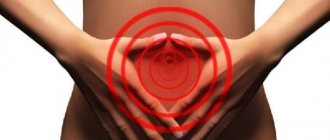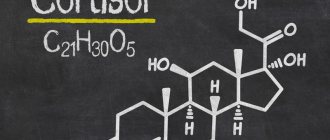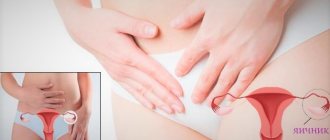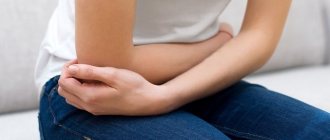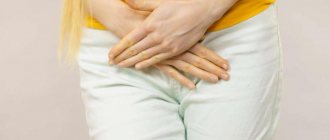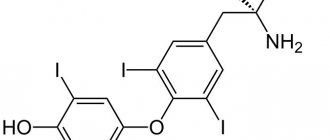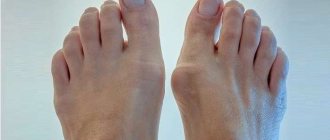Let us remember that the bladder is a hollow organ in which urine that flows through the ureters accumulates. It serves to remove it from the body through the urethra. The bladder is located in the pelvis, behind the pubic bone.
Bladder hurts
most often women. The reason is the structural features of the female body. The urethra in women is short, wide and straight. Pathogenic microorganisms easily penetrate through it into the bladder. And the channel is located in such a way that various infections are more easily retained in it. It is close to the rectum and vagina, organs densely populated with opportunistic bacteria that can cause bladder inflammation. If a woman has bladder pain, treatment usually takes a long time. If you experience any discomfort in the area of this organ, you should consult a doctor without self-medicating.
Types of pain when urinating
What causes discomfort in the bladder? quite a lot and depending on them, the nature and intensity of pain can change. As a rule, there is only one localization - the lower abdomen, but it is necessary to take into account that this place can hurt not only because of diseases of this organ.
It is necessary to understand how to classify the symptoms of bladder pain in women:
- Discomfort, which intensifies as the organ fills with urine, reaching its peak during the process of emptying, after which it subsides. This type of pain indicates inflammation of the mucous membrane - cystitis. In addition, the disease is signaled by frequent urination, scanty urination, and pus in the urine.
- If the same symptoms occur, but without impurities in the urine, we are talking about cystalgia.
- The feeling of pain that occurs during activity - walking, running, bending - indicates the presence of stones in the bladder. When moving, they can move, irritating the mucous membrane, which causes pain. The color of the urine changes (due to an increase in leukocytes and red blood cells in the blood).
- When the urinary organ ruptures (due to injury or overflow), the pain in the lower abdomen is very sharp and severe. There is an unbearable desire to urinate, which cannot be fulfilled due to damage to the organ.
- When hypothermia occurs, cutting pain occurs in the lower abdomen.
- A burning sensation accompanies pathologies of the urethra - inflammation, damage - and is also a sign of irritation of the external genital organs.
- Pressing pain is a symptom of kidney problems and bladder injury. Often accompanied by fever and general weakness.
- Pulling in the lower abdomen can occur due to diseases of the reproductive system, kidneys, or when a salt deposit occurs in the bladder.
- Spasms may indicate the presence of neoplasms, injuries, or renal colic.
- Discomfort and burning in women may indicate pregnancy. At the very beginning of the period, the uterus begins to increase in size, putting pressure on neighboring organs.
The same pathologies can manifest themselves in different types of pain. Under no circumstances should you make an independent diagnosis, so as not to aggravate the situation.
In addition to pain, you should pay attention to:
- color and smell of urine;
- frequency of urination;
- incontinence;
- prolonged absence of urination;
- nausea;
- weakness;
- temperature increase;
- the presence of impurities in the urine - blood, pus.
How does your bladder hurt?
Symptoms of bladder pain
make themselves felt by unpleasant sensations in the lower abdomen. They can be of varying intensity and character - stabbing, cutting, pulling, pressing - depending on the cause that causes them. As a rule, other signs are also present: the frequency and nature of urination, the color of urine changes, and an admixture of blood or pus may appear in it. Other common symptoms include increased body temperature, weakness, nausea, and a burning sensation during urination.
Bladder pain in women
for various reasons, for example, due to urolithiasis, colitis, gynecological pathologies, tumors, rupture of the bladder. But most often, discomfort is caused by diseases such as cystitis, cystalgia and urethritis.
Main reasons
Women are much more susceptible to bladder inflammation than men. This is due to the fact that the structure of their genitourinary system is different, namely, the length of the male urethra is several times longer than the female one. The infection, having penetrated the male urinary canal, will most likely remain there without having time to spread to other organs. Pain in the urethra in men is more severe, which helps to recognize inflammation earlier.
It is important to treat urethral pathologies in a timely manner so that they do not lead to complications in the functioning of neighboring organs.
In the female body, the spread process proceeds much faster due to the small size of the urinary canal, through which the inflammatory process spreads quite quickly.
There are common reasons that lead to pain in the lower abdomen after urinating:
- urethritis;
- cystitis;
- urolithiasis disease;
- STDs (sexually transmitted diseases);
- neoplasms.
But there are also gender differences that are unique to one sex.
In men
Pain after urination in men can be caused by:
- prostatitis - inflammation of the prostate gland;
- Prostate adenoma is a benign neoplasm.
Among women
The causes of pain when urinating in women are as follows:
- ovarian apoplexy - rupture of organ tissue;
- endometritis - inflammation of the endometrium of the uterus;
- salpingoophoritis (adnexitis) - inflammation of the appendages;
- endocervicitis - inflammation of the cervix;
- parametritis - inflammation of the peri-uterine connective tissue;
- perimetritis - inflammation of the serous layer of the uterus;
- ectopic pregnancy.
In representatives of both sexes, the cause of pain may be that another part of the body projects unpleasant sensations to the bladder area. A huge number of pathologies can “give” to other organs.
Causes of pain not related to the urinary system:
- spinal injuries;
- osteochondrosis;
- intestinal pathologies (colitis and so on);
- damage to the pubic symphysis is the place where the pelvic ring closes.
Cystitis
Every woman has encountered this unpleasant disease at least once in her life. Cystitis is an inflammation of the bladder, accompanied by pain when urinating. With cystitis, the mucous or inner layer of the bladder is most often affected, but sometimes the muscular and submucous membranes are also inflamed. A characteristic sign of the disease is discomfort, which increases as the bladder fills with urine, reaching its peak during emptying, after which it subsides. Common symptoms of cystitis are also frequent but scanty urination, the presence of pus in the urine, and elevated body temperature. The nature of inflammation can be acute or chronic. The latter form develops due to improper or incomplete treatment. But it may also be due to the fact that the causes of acute cystitis have not been found and the provoking factors have not been eliminated.
Cystitis is usually caused by infections. But other factors can also contribute to bladder inflammation. For example, hypothermia, especially of the lower body, frequent and prolonged constipation, decreased immunity, prolapse of the bladder associated with age or multiple births.
It should be noted that cystitis is largely seasonal. The time of this illness is autumn. It is during this period that we often become hypothermic. “To prevent cystitis, proper clothing is important,” reminds Tatyana Melnikova, general practitioner, consultant at the Independent Laboratory “Invitro” . — In wet weather, forget about short skirts, thin tights, and low-waisted pants. You should also not wear tight underwear - this has a bad effect on local blood circulation, and therefore on general well-being. But the body is able to effectively resist infections only when it is completely healthy. Drink enough fluid (at least 1.5–2 liters per day) and try to empty your bladder every 2-3 hours. Avoid the urge to urinate. This can cause backflow of urine into the ureters, congestion in the bladder and ischemia of the bladder wall. Problems with stool are also an unfavorable factor for cystitis. Try to eat healthy and be active: this promotes normal bowel function.”
What tests need to be taken?
If you experience any discomfort in the lower abdomen, you should consult an appropriate doctor as soon as possible. Men should visit a urologist, and women should visit a nephrologist, or first go to an appointment with a general practitioner, who, after an examination, can refer you to the right specialist.
Tests prescribed to clarify the diagnosis:
- Ultrasound (ultrasound examination) of the pelvic organs and genitourinary system;
- MRI (magnetic resonance imaging) of the same organs, if a more accurate picture is required;
- general urine analysis;
- urine tests according to Nechiporenko, Zimnitsky;
- bacteriological culture of urine;
- cystoscopy - examination of the internal condition of the bladder using special instruments;
- smears from the urethra, vagina;
- uroflowmetry - measuring the speed of urine flow during urination;
- X-ray of the bladder with contrast;
- examination by a gynecologist/proctologist.
In some cases, a situation may arise that requires urgent action, when it is impossible or there is no strength to wait until going to the doctor.
When to call an ambulance:
- acute colic;
- suspicion of rupture;
- lack of urination;
- a large amount of blood in the urine.
Urethritis
Inflammation of the walls of the urethra (urethra) causes pain and pain in the bladder
. This condition is called urethritis. Its symptoms: pain, pain and burning when urinating, as well as pronounced discharge from the urethra. Their character depends on the causative agent of the disease. It must be said that in women, urethritis is almost always combined with cystitis and other inflammations of the pelvic organs and very rarely occurs as an independent disease. Urethritis is most often of an infectious nature. The causative agent may be one or more viral, bacterial, or fungal microorganisms. They enter the urethra from the upper urinary tract, or with blood and lymph from other areas of inflammation. Most of these infections are sexually transmitted.
There are acute and chronic urethritis. Most often, the disease becomes chronic due to illiterate treatment or self-medication. Manifestations of chronic urethritis, as a rule, are erased, hardly noticeable, or even completely absent. However, during periods of exacerbation they flare up with renewed vigor.
Treatment in men
Depending on the cause of the pain:
- Cystitis. Antibiotics and herbs are prescribed. To relieve pain - antispasmodics and anti-inflammatory drugs.
- Prostatitis. Antibiotics, painkillers, bed rest and plenty of fluids are prescribed.
- Tumors are treated with medication and radiation therapy. It is recommended to remove the tumor surgically.
- Injuries. For minor injuries, a course of antibiotics and anti-inflammatory drugs is prescribed, and a catheter is installed in the bladder for temporary outflow of urine. If the injury is serious, then surgical intervention is necessary.
Associated symptoms
Bladder discomfort can occur at any age. In children and older people, the signs of the problem are less pronounced. In young men and women, the pain can be quite severe. They are often accompanied by other symptoms:
- Incontinence and frequent urination. In severe cases, a person needs to wear special urological pads or diapers.
- The presence of blood in the urine or purulent inclusions.
- Pain while emptying the bladder.
- Feverish condition.
- Attacks of nausea.
- Unnatural foul odor of urine.
- In some cases, urine changes color.
Painful sensations may migrate to the lumbar region. In this case, the patient feels constant fatigue and performance decreases sharply.
Detection of blood in the urine is a reason to immediately consult a doctor. This is a symptom of the development of serious diseases that threaten not only health, but also life.
Treatment in women
Medical care for bladder pain:
- Cystitis. Treatment with individually selected antibiotics. Additionally, you can take decoctions of recommended herbs. You need to drink more water to reduce the acidity of your urine. Warming up works well - warm sitz baths, foot baths, heating pads on the lower back and in the perineum.
- Cystalgia. The main emphasis is on normalizing blood circulation in the pelvic organs. Gymnastics complexes and an active sex life are recommended. Severe pain is relieved with antispasmodics (No-shpa, Papaverine, and so on). Heat has a beneficial effect.
- Urethritis. Antibacterial and anti-inflammatory drugs. To reduce inflammation, I can prescribe antihistamines. To eliminate STDs - doxycycline and similar medications.
- Urolithiasis is eliminated surgically. Crushing stones with medications is possible only at the earliest stage of the disease.
Additional measures are possible in the form of traditional medicine - decoctions, compresses - but strictly with the approval of the attending physician.
Cystalgia
Another common cause of bladder pain in women is
is cystalgia. Its manifestations and symptoms are similar to cystitis, but the quality of urine does not change, and test results remain within normal limits. That is, there is no inflammatory process as such.
A characteristic feature of cystalgia is that it often occurs, as they say, from nerves. It is no coincidence that it is called vesical neurosis. Against the background of an unstable psyche and stress, inflammatory processes in the pelvic area provoke pain and discomfort in the bladder. It has been noticed that women entering menopause often complain about various manifestations of cystalgia. This is due to the same surge of negative emotions and depression associated with the woman’s own reaction to the natural processes of withering in the body. Cystalgia may also be caused by problems of a sexual nature. Bubble neurosis is often diagnosed in women who do not experience satisfaction from their intimate life. The lack of complete discharge leads to stagnation of blood in the pelvis and emotional and psychological exhaustion.
Possible causes of cystalgia include previous cystitis, endocrine disorders, hypothermia of the lower body, as well as gynecological diseases that cause hypersensitivity of the bladder. Exacerbations of cystalgia, like cystitis, can be seasonal. Manifestations are especially striking in autumn and winter.
Prevention
To prevent bladder pain, you need to follow simple rules:
- Observe personal hygiene rules. Uncleanliness leads to the development of inflammation of the external genital organs, which easily affects the urethra, spreading to the bladder.
- Drink enough fluids.
- Limit the consumption of salty, spicy, fatty foods in your diet.
- Lead an active lifestyle, move more, walk.
- Avoid hypothermia. Everyone knows lower back pain from being “blown.” This cannot be allowed.
- Avoid stressful situations and get plenty of rest. Fatigue and nervous exhaustion lead to a decrease in the body's protective functions.
- Regularly undergo medical examinations to identify possible diseases in the early stages and successfully eliminate them.
Diagnostics
In order for the doctor to make the correct diagnosis and answer the question of why the bladder hurts, he often has to resort to several diagnostic procedures at once.
First of all, an objective examination of the patient allows us to establish the source of pain and its localization, and find out where the pain radiates. During deep palpation, as a rule, a protective tension in the muscles of the anterior abdominal wall is felt. Sometimes palpation is simply impossible. The symptom of tapping is carried out in the lumbar region. Since in men the cause of pain in the bladder can be a pathological process in the tissues of the prostate gland, it is necessary to conduct a digital examination of it.
Examination of men with pain in the bladder always begins with a digital examination of the rectal area
Changes in laboratory parameters can be very diverse, sometimes a hemogram or urine test remains within normal values (for example, with cystalgia). This does not exclude the presence of the disease, which means that such patients, if necessary, undergo an additional urine test according to Nechiporenko, Zemnitsky test and others.
During instrumental studies, the doctor not only establishes a final diagnosis, but also excludes all possible diseases that occur with similar symptoms. When the bladder hurts, the specialist prescribes the following instrumental diagnostic procedures:
Excretory urography allows you to evaluate not only the anatomical features of the excretory organs, but also their function
- An ultrasound is performed in the first minutes after the patient is admitted to the hospital (in the emergency department, which allows one to determine the further profile of the department where the patient will be sent).
- CT or MRI of the urinary tract (in those medical institutions that are equipped with the necessary equipment). The methods are the most informative and speed up the diagnostic process as much as possible.
- The method of excretory urography, until the introduction of ultrasound and radiation diagnostics, was considered the “gold standard” in the instrumental determination of diseases of the urinary system. Currently, the procedure is not so widely used, but still has not lost its diagnostic value.
- In complex diagnostic cases, when the picture of the disease leaves many questions, or the patient’s condition sharply worsens, together with surgeons, they resort to laparoscopic diagnosis, which often turns into a treatment procedure.
Prescription of medications
If there is pain in the bladder in men, after the necessary examination, they are eliminated in two ways with the help of physiotherapeutic and drug treatment. The drugs in this case may be:
- To treat the bladder in men, drugs with antibacterial properties are used. This increases the likelihood of the death of pathogenic bacteria that cause spasms in the bladder area.
- Medicines to relieve symptoms of inflammation, pain, pain and other symptoms according to the diagnosis of the disease.
- Use of diuretics. These medications include diuretics or herbal decoctions that help quickly eliminate infections from the bladder area. To avoid worsening, especially with bladder stones, they should be taken with caution, and preferably under the supervision of a doctor.
- Taking vitamin-mineral complexes and drugs with immunomodulatory properties. This approach to the treatment of bladder diseases in men can speed up the healing process.
Where the course of treatment of the disease will depend on the stage of the detected pathology. For example, if there is a tumor in the bladder or other organs of the genitourinary system, the use of mud procedures, warm sitz baths or electrophoresis can provoke a deterioration in the patient’s condition, therefore such treatment methods are also not recommended without the recommendation of a doctor.
Methods for relieving pain
What to do if your bladder hurts?
Modern medicine is now able to remove even the most severe pain present in this organ of the genitourinary system. The only exception is the terminal stage of cancer with a characteristic localization.
To eliminate the pain syndrome, the type of disease that has become a provocateur of unpleasant sensations in this organ is determined.
If the cause is kidney disease or genital disease, then appropriate drug therapy is prescribed. At the same time, the fight against pathogenic bacteria that cause cystitis is being carried out.
To relieve the inflammatory effect, antibacterial drugs of this type are prescribed: Monural, Nitroxoline, Furagin, Palin.
The drugs can be used both in tablet form and as intramuscular injections.
The procedure for drug therapy is determined solely by the attending physician. While extensive inflammation of the mucous membrane is being eliminated, measures are being actively taken to eliminate pain.
To eliminate pain in the bladder, antispasmodic medications of the group are used: Spasmol, Drotoverin, Spazmolmen, Otilonium bromide, Spasmoveralgin.
During pregnancy, local remedies are used to relieve pain, namely papaverine suppositories with hydrochloride.
They are introduced into the anus so that the active substances reach the inflamed epithelial walls as quickly as possible and eliminate pain by relieving spasms.
This method allows a pregnant woman to feel comfortable and prevent the active substances of the drug from spreading throughout the body, including affecting the process of fetal formation.
It is important to remember that conventional painkillers are not able to eliminate pain for a long period of time. Their help has only a short-term effect.
After taking conventional analgesics, pain in the bladder area may disappear for several hours, and then reappear with even greater intensity.
In addition, the solution to the problem of pain in this organ of the excretory system does not lie solely in the plane of spasm relief. Elimination of pain is an auxiliary factor to make life easier for the patient.
The main therapeutic effect should be aimed at eliminating the cause of pain, that is, infection.
For this purpose, the following diagnostic measures are carried out: ultrasound of the abdominal cavity and pelvic organs, urine analysis to identify foreign microorganisms (urinalysis for bacterial culture), general urine analysis, collection of smears of the mucous membrane from the urethra.
The availability of data obtained from the results of these studies allows a qualified attending physician to eliminate pain in the bladder area as soon as possible with a complete recovery of the patient.
Prostatitis
Pain in the bladder area in men can be caused by prostatitis. The disease is an inflammation of the prostate gland, which occurs in chronic or acute form. The disease occurs in men over 25 years of age . Statistics show that more than 75% of the male population suffers from prostatitis.
The following factors lead to prostatitis:
- Severe hypothermia;
- Regular constipation;
- Sedentary lifestyle;
- Excessive sexual intercourse or prolonged abstinence;
- Chronic illnesses;
- Venereal diseases;
- Perineal injuries;
- Alcohol abuse;
- Tobacco smoking;
- Poor nutrition;
- Constant stress and much more.
Most experts believe that these factors only contribute to the development of the prostate. And the true cause of the occurrence is generated by stagnation in the tissues, which are formed due to disruption of capillary blood flow, which leads to an infectious process.
Signs of prostatitis
Symptoms of bladder pain with prostatitis are divided into three acute stages:
- Catarrhal;
- Follicular;
- Parenchymatous.
Each stage can lead to chronic prostatitis.
During the catarrhal stage, the patient complains of frequent urination, which causes minor pain in the bladder and perineum.
The follicular stage is manifested by intense pain, spreading to the bladder and anus. Urine flows out with difficulty, in a thin stream.
In addition to acute pain, the parenchymal stage is manifested by the following symptoms:
- General poisoning of the body;
- Temperature increase;
- Fever;
- Poor urination;
- Sensation of pulsation in the perineum;
- Difficulty defecating.
With chronic prostatitis, in addition to the above symptoms, a man may experience slight discharge from the urethra.
It is worth knowing that untimely or self-treatment will lead to infertility, so if such symptoms occur, you should consult a doctor.
Treatment options
To identify the stage of the disease, doctors do urine analysis, rectal examination, ultrasound and spermogram.
The following methods are prescribed for the treatment of the prostate::
- Antibacterial therapy;
- Massages;
- Physiotherapeutic procedures;
- Drugs that restore the immune system.
To maintain health, doctors recommend leading a healthy lifestyle. The patient should sleep for the prescribed amount of time, eat healthy foods, and not do excessive physical activity.
Gynecological diseases
If patients have pain in the lower abdomen and frequent urination, the doctor may suspect problems in gynecology. The most common inflammation is in the mucous membranes of the vagina, the so-called vaginitis. It can develop when an infection occurs against the background of a decrease in general immunity and changes in the patient’s hormonal background. Its occurrence is also influenced by endocrine diseases and damage to the genital organs of a mechanical and chemical nature.
Inflammation in the uterus in women
When inflammation occurs in the mucous layers of the uterus, endometritis occurs, which also causes pain. Its occurrence is provoked by an infection along the ascending tract, when bacteria enter the cervix from the urethra or vaginal mucosa. The causative agents are gonococci, streptococci, chlamydia and staphylococci, as well as various viruses. Quite often, inflammation in the uterus spreads to muscle tissue, then endometritis develops into myometritis. Pain during the development of myometritis resembles acute contractions and certainly has a pulling character.
With inflammation in the fallopian tubes, the disease is called salpingitis and, like endometritis, occurs from pathogenic bacteria. This disease provokes urinary retention, which is extremely painful for the patient. Since salpingitis is located in the genitourinary system, it is often confused with urological problems.
Features of urology in elderly women
In older women, deurination with pain often occurs when polyps form, and the painful syndrome radiates to the lower half of the abdomen. Experts note that for this age there is often a high susceptibility of nerve endings and pain after urination and sexual intercourse. This is due to a decrease in the production of certain hormones, which leads to insufficient lubrication.
Prostate diseases
In cases where men have tension in the lower abdominal cavity and frequent deurination appears, the causes are sought in pathologies of the prostate gland. As its size increases, it begins to strongly press down on the bladder, which provokes a frequent urge to urinate.
If the lower abdomen pulls very strongly after urination, the symptoms may subside for a short time, but if the inflammation is not treated, cystitis may develop.
Diagnosis and treatment
A diagnosis can only be made after a thorough examination. It should include the following studies:
- Ultrasound (MRI) of the urinary system.
- Ultrasound (MRI) of the pelvic organs.
- Gynecological examination.
- General blood and urine analysis.
- Biochemistry of blood.
- Urine culture.
- Cystoscopy.
Treatment of cystitis and urethritis is carried out with the help of uroantiseptics (Furamag, Furagin), antispasmodics (No-shpa, Revalgin), as well as antibiotics. The most commonly prescribed are Norbactin, Monural, Fosfomycin, Nolitsin. For nephritis, stronger drugs are prescribed - Suprax, Ceftriaxone. Bed rest is required, a gentle diet and plenty of fluids are required. Chronic bladder diseases are treated with:
Stones in the kidneys and ureters are removed using minimally invasive techniques, crushed or dissolved using special preparations. Cancerous pathologies are treated by surgery, chemotherapy, radiation; large benign formations are removed surgically.
For gynecological inflammatory diseases, antibiotics in tablets or injections are indicated. If an ectopic pregnancy or ovarian apoplexy is diagnosed, only surgical intervention will help. In order to avoid problems with the genitourinary system, it is important to maintain hygiene, maintain proper immunity, avoid hypothermia, exercise and eat right.
Tired of fighting kidney disease?
SWELLING of the face and legs, PAIN in the lower back, CONSTANT weakness and fatigue, painful urination? If you have these symptoms, there is a 95% chance of kidney disease.
If you care about your health, then read the opinion of a urologist with 24 years of experience. In his article he talks about RENON DUO capsules.
This is a fast-acting German remedy for kidney restoration, which has been used all over the world for many years. The uniqueness of the drug lies in:
- Eliminates the cause of pain and brings the kidneys to their original state.
- German capsules eliminate pain already during the first course of use and help to completely cure the disease.
- There are no side effects and no allergic reactions.
If a woman has bladder pain. Treatment options.
Pain in the bladder occurs for many different reasons, and if it occurs, you should immediately contact a specialist. The weaker sex is more susceptible to bladder diseases. The reason for this is the specific structure of a woman’s body: their urethra is located in such a way that various infections are more easily retained in it, and during pregnancy the risk of getting sick also increases due to decreased immunity. If a woman has bladder pain, treatment will most likely take a long time.
Main causes of pain:
- urethritis – irritation (swelling, redness) of the urethra;
- cystitis - inflammation of the bladder;
- polyps, tumors of the bladder walls;
- injuries to the urethra or bladder;
- urolithiasis disease;
- diseases of the uterus;
- referred pain.
How is diagnosis carried out?
Initially, the patient should see a therapist. For diagnosis, the doctor prescribes blood with urine for a general analysis, as well as examination using ultrasound equipment. A urine test is also examined for bacterial cultures. Clinical blood tests look at white blood cells, as well as the number of red blood cells. These indicators characterize the infection in the body.
Women should schedule an examination with a gynecologist, since infections often occur through sexual contact and reproductive diseases develop. Men should visit a urologist to rule out pathologies in the prostate gland. Based on the collected results, the therapist identifies the cause or suspicion of pathology, after which the patient is sent to a specialized specialist.
More on the topic: What can cause urine to become transparent?
Cystitis therapy
Treatment of male cystitis includes following a diet, bed rest, and taking medications. You can get rid of bladder pain in men using folk remedies. You will first need to consult a urologist.
During the treatment of cystitis, the patient is prescribed antibiotics, herbal medicines and anti-inflammatory drugs. If there is severe pain in the urinary tract, and the inflammatory process occurs in an acute form, the following antibiotics are recommended for men:
- Nolitsin is an antibacterial drug that belongs to the pharmacological group of fluoroquinolones. The active component of this drug is norfloxacin. The drug is taken 2 times a day for 6 days if a man has acute pain. For chronic pathology, treatment lasts 6 weeks.
- Palin is an antibiotic of the quinoline group. It is prescribed against gram-positive and gram-negative microbes that provoke pathological processes in the urinary system.
- Monural is a modern antibiotic that affects all pathogenic microbes. With its help you can quickly get rid of cystitis.
- Nitroxoline is effective against fungi and various microbes. It is prescribed to relieve pain from cystitis and other bladder diseases in men.
In addition to the above antibiotics, you can take Furagin, Rulid, Nevigramon. The list of drugs and their dosage is prescribed to each patient individually.
Carrying out herbal medicine
Treatment of mild cystitis, when pain and other symptoms were detected at an early stage, involves herbal medicine. This method involves taking plant-based herbal remedies. If necessary, the doctor may prescribe the use of herbal remedies with antibiotics.
Urologists consider the most effective herbal remedies to be:
- Cyston is a medicinal product consisting of various extracts of medicinal plants. Treatment with Cyston is aimed at reducing inflammation and dissolving kidney stones. The drug enhances the effects of antibiotics.
- Monurel - contains cranberry extract. This plant has a diuretic and antimicrobial effect. Tannins contained in cranberry juice prevent bacteria from attaching to the organ. Monurel is prescribed to prevent relapse of cystitis.
- Canephron - this medication contains rosemary, rose hips, and lovage. With its help you can reduce pain and cramps when emptying the bladder. Often such tablets are prescribed to prevent chronic organ disease.
- Phytolysin paste is sold in a pharmacy in the form of an aqueous-alcoholic solution of medicinal herbal extracts. This medicine is based on orange, pine and rosemary oils. The drug is a good antispasmodic.
Urolithiasis disease
Pain in the bladder may indicate urolithiasis. This disease affects 12% of men and 5% of women. Often, the disease is easily cured. And only in rare cases is surgery used.
Substances such as calcium, oxalic acid and cystine can create crystalline formations that remain in the kidneys. After some time, they turn into stones of various sizes. In addition, urolithiasis occurs for the following reasons :
- Genetic inheritance;
- Impaired metabolism;
- Sedentary lifestyle;
- Drinking hard water;
- Poor nutrition;
- Sexual infections.
There are also cases when urolithiasis does not manifest itself, but is discovered during an examination of other organs. Experts have proven that stones can be located in the kidneys without causing pain to the bladder for many years.
Such formations, moving along the urinary canal, leave the body with urine. If they get stuck in the urinary system, preventing the outflow of urine from moving fully, the person will experience very unpleasant pain in the bladder. When the stones have reached large sizes, they will not be able to leave the body on their own. This requires drug therapy or surgery.
Signs of the disease
The main symptom of the disease is pain in the bladder area that occurs when urinating. Other signs include :
- Renal colic;
- Drops of blood or sand in urine;
- Nausea accompanied by vomiting;
- Unexpected urge to urinate.
Bladder pain in women caused by cystalgia
The word "cystalgia" is translated from Greek as "pain in the bladder." The peculiarity of this condition is the persistence of typical symptoms of cystitis with objectively good test results. It turns out that there is no inflammation, but there is still pain.
Cystalgia is not talked about so often, although it is diagnosed in 10-15% of women who consult a urologist. Characteristic signs of this condition:
- pain in the bladder with a minimal amount of accumulated urine;
- Urinary urgency that is very difficult or impossible to tolerate;
- constant feeling of fullness of the bladder;
- pain radiating to the perineum and lumbosacral region.
As a rule, cystalgia occurs latently, worsening in autumn and winter. The pain is not very strong, but constant, often occurring without any apparent reason. Among the main reasons for the development of pathology:
- Strong emotional experiences, frequent quarrels and stress.
- Sedentary lifestyle, lack of minimum required physical activity.
- Sexual dissatisfaction, fear of intimacy, the practice of coitus interruptus as a method of contraception.
- Abuse of alcoholic beverages, predominance of spicy foods in the diet.
- Presence of gynecological diseases, ovarian dysfunction.
- Pregnancy or abortion.
- An allergic reaction to certain products (for example, some patients experienced swelling of the bladder neck when drinking milk).
- Changes in hormonal levels (especially important for women during menopause).
If cystalgia has developed due to nervous experiences, then it is called psychosomatic cystitis. In fact, this condition can be classified as a type of neurosis.
Treatment options
These medications are taken for severe pain of any nature, one tablet, no more than four tablets per day.
The duration of treatment is determined by the doctor.
These are highly effective drugs that are taken in an individually prescribed dosage. With their help, urethral infections are treated and the health of the urinary system is restored.
These medications are taken very carefully, in a strictly prescribed dosage. They help normalize the functioning of the organs of the entire urinary system. Usually the disease subsides by 5-7 days.
Folk remedies can help restore health. However, they should be taken only in the initial stages of pathologies, since at a later stage they may lose their effectiveness.
Before taking folk remedies, you should consult your doctor, as individual intolerance is possible.
Take an infusion of dill seeds. This remedy very effectively eliminates pathologies of the genitourinary system and improves the human condition.
To prepare the infusion, you need to mix a glass of boiling water and one tablespoon of seeds. The solution must be infused for at least six hours, then filtered. The finished infusion is taken half a glass 2-3 times a day between meals.
For pain in the bladder, a diagnosis is made and only then treatment is applied to eliminate the cause. For this purpose, urine and blood tests, hardware tests (ultrasound, urography, MRI, cystoscopy and others) are necessarily used.
Each case requires an appropriate therapeutic course. Often it includes taking specially selected antibacterial agents, since it is tissue infection that leads to inflammation and subsequent disruption of the genitourinary system.
Depending on the clinical picture, drugs of different spectrum of action are prescribed. These can be strong diuretics and stone-dissolving medications, sedatives to normalize the nervous system, and so on.
A certain position in the treatment of urological problems is occupied by infusions and decoctions of herbs, herbal mixtures and ready-made herbal remedies. They are actively used as means to stimulate urine output, anti-inflammatory, and tonic.
Treatment is primarily aimed at eliminating the provoking factor, but the need to relieve pain is also taken into account. For this purpose the following are assigned:
- Antispasmodics. The drugs help cope with pain and reduce muscle contraction. It is not recommended to take it before the main diagnosis, as the symptoms may be distorted.
- NSAIDs. Drugs with high analgesic ability reduce signs of inflammation in a short time. They are not considered medicinal drugs and are not recommended for long-term use.
- Diuretics. Special stimulating components help prevent stagnation of urine, which is especially necessary during inflammatory reactions, when stagnation of urine leads to an increased risk of suppuration.
Treatment of each disease that provokes pain in the bladder is carried out according to an individual program, prescribed exclusively by a doctor.
To eliminate such problems, they most often use:
- drug treatment;
- surgical methods;
- physiotherapeutic procedures.
Antibiotics are the basis of drug treatment for many inflammatory diseases of infectious origin. Doctors also recommend medications that restore the immune system. For each disease, a specific course is selected and a special drug is prescribed. For cystitis, the basis of drug therapy is:
- Ciprofloxacin;
- Monural;
- Nitrofurantoin.
Ciprofloxacin has been used to treat bladder infections for many years. You should not take these tablets on an empty stomach. Ciprofloxacin is also prescribed if the urethra is inflamed. However, pregnant, lactating women and children should not use this drug. The drug completely relieves inflammation and relieves pain in the lower abdomen.
Monural is no less effective, but has virtually no contraindications. Monural can be taken by children, the elderly, during pregnancy and lactation. It acts more gently, eliminates inflammation and relieves the urethra and bladder walls from pain.
Nitrofurantoin is prescribed for women with kidney problems. It is also recommended during pregnancy because it does not pose any danger to the developing fetus. Nitrofurantoin eliminates inflammation in the bladder and relieves pain. In addition, this remedy heals the urethra and bladder lining from infection.
To treat the genitourinary system, you first need to find out the exact cause of the pain. Take the following tests:
- urine culture for bacteria;
- general urine analysis;
- Ultrasound of the pelvic organs;
- urogenital smears for infections;
- sowing for Candida fungi and flora.
If there are no serious chronic diseases and the woman is not in an interesting situation, the doctor prescribes a set of effective medications:
- broad-spectrum antibiotic – Ofloxacin, Levofloxacin;
- anti-inflammatory drugs – Canephron;
- diuretic teas and herbal infusions;
- painkillers - Analgin, No-shpa, Papaverine.
Canephron is well suited for pregnant women; the tablets have no contraindications. Buy a warm camel wool belt for your lower back or wrap yourself in a down scarf. If pain in the bladder is caused by injury, surgical intervention is necessary.
After determining the reason why the bladder hurts, they begin to treat this disease.
Treatment of cystitis consists of prescribing a complex of antibacterial and uroseptic drugs. Additionally, complete sexual rest is recommended.
Urolithiasis is best treated in a hospital setting to avoid complications such as blockage of the urinary tract after instrumental or drug therapy.
If symptoms of appendicitis, renal colic, ectopic pregnancy or threatened miscarriage appear, you should definitely go to the hospital.
In this condition, minutes count, and timely treatment can save the pregnancy, and sometimes even a person’s life.
If the cause of pain in the bladder is not related to the organs of the urinary system, then appropriate treatment is carried out by a urologist or gynecologist. Before seeking medical help, you can try treatment at home. For cystitis, warm sitz baths with chamomile and a heating pad on the lower abdomen are useful.
If you suspect urolithiasis, your bladder will hurt less if you follow a diet. It is necessary to limit the consumption of salty, spicy and fatty foods.
Treatment
The principles of therapy are pain relief, elimination of symptoms that reduce quality of life, and restoration of full bladder function.
To eliminate pain, antispasmodics and non-steroidal anti-inflammatory drugs are used. The most convenient form is rectal suppositories.
Medicines
The therapeutic regimen is prescribed based on the clinical picture. For inflammatory processes, antibiotics are used: before urine culture - broad spectrum, after microbiological culture of pathogenic microflora - narrow.
To eliminate pain, antispasmodics and non-steroidal anti-inflammatory drugs are used. Convenient form - rectal suppositories.
Treatment is supplemented with immunostimulants and alpha-blockers to relax the urethral muscles.
You may need an installation - infusion of medication through a catheter directly into a hollow muscular organ.
Physiotherapy
Physiotherapeutic procedures are prescribed after eliminating the acute inflammatory process. The goal of treatment is to restore physiological processes and eliminate urinary stagnation.
The most commonly prescribed: electrophoresis, ultrasound, magnetic therapy, infrared heating. For prostatitis and prostate adenoma, vibration massage is used.
Physiotherapeutic procedures are prescribed after eliminating the acute inflammatory process. For example, this could be magnetic therapy.
ethnoscience
Decoctions of oats, birch buds, half-fallow, and corn silk have diuretic properties. To eliminate inflammation, brew yarrow, calendula, nettle, flaxseed, and juniper. Inhibit the activity of pathogenic microflora of grass: bearberry, St. John's wort, goldenrod. Warm sitz baths with chamomile, pine needles, and oak bark have a beneficial effect on the body.
When using medicines from the arsenal of traditional medicine, you must inform your doctor.
Therapy methods
Drug treatment
Pathology can be treated in several ways, depending on the degree of damage. To relieve pain, it is recommended to take painkillers.
Taking into account the severity of symptoms and the patient’s age, the doctor prescribes Papaverine, Beralgin, Tempalgin and others. These remedies relax muscles and eliminate pain.
If medications do not eliminate the problem, then surgery is indicated. In most cases, urolithiasis or cystic formation is treated in this way.
Doctors often rinse the internal organ with special means.
Urological diseases
Aching pain when urinating in women, as in men, is most often caused by diseases in the urological area.
Cystitis
The most common disease in urology is cystitis, in which the walls of the bladder become inflamed. Its causes are prolonged hypothermia, as well as the penetration of infectious agents into the body when the body’s immune defense is reduced.
More on the topic: What are the symptoms of genitourinary cancer in women?
Cloudiness appears in the urine, and in some cases blood or pus is released. The urge to deurinate becomes more frequent up to 10 times a day and becomes very painful.
Urethritis
In case of inflammation of the urethral canal (urethra), doctors diagnose urethritis, which occurs due to infection or chemical and mechanical damage to the mucous membranes of the canal. The symptoms of urethritis are very similar to cystitis, deurination also occurs with pain and discomfort, discharge of blood clots or pus, the patient notes that there is a nagging pain in the lower abdomen when urinating and complains that the lower back is pulling.
Pyelonephritis
The lower abdomen pulls and frequent urination occurs with pyelonephritis, an inflammatory process in the renal system. Its origin is also infectious; as it develops, febrile temperature rises, severe chills and muscle aches, poor appetite and frequent urges appear. After some time, back pain joins the symptoms. The appearance of pus or blood clots during urination for this disease is considered a dangerous sign of complications.
Urolithiasis disease
In some cases, the lower abdomen pulls when stones, sand or stones pass through the ureters. This characterizes the development of urolithiasis, which is accompanied by an increase in fluid levels in the body. Stones are most often deposited in the kidneys and when removed by the body, they damage the mucous membranes of the urinary tract. There have been cases where they affect the urethra.
Oncology
Oncological diseases are accompanied by the same symptoms as urological diseases. The most common is uterine fibroid, which, although it is a benign neoplasm, is dangerous due to the absence of symptoms. This risks only being accidentally detected during a routine examination.
Malignant tumors are always characterized by special symptoms that differ depending on their location in the body. Just as often, patients are diagnosed with cancer of the bladder, in which blood and pus appear in the urine. The pain is localized in the area above the pubis, with patients complaining of impaired deurination.
What to do and how to treat: tablets and folk remedies
To alleviate pain in the urinary system, the following herbal decoctions made at home are added to medications:
- Collect mint leaves during flowering. Pour 1 tablespoon of crushed leaves into 1.5 liters of boiling water. Leave to simmer on the fire for 10 minutes. Wait for it to cool down and drink 250 ml 3 times a day. The course of treatment is 1 month.
- Pour 1 tablespoon of dill with seeds into 400 ml of boiling water. The infusion is infused for half an hour. Single dosage of 80 ml, three times a day 30 minutes before meals. The course includes taking the decoction for at least 2 weeks.
- Pour 1 tablespoon of knotweed into 250 ml of boiling water. Close the pan with a lid and wrap it in a blanket for a couple of hours. The dose is 3 times a day, 1 tablespoon of decoction.
What is the treatment?
Based on the results of the tests and ultrasound, the doctor makes a diagnosis and prescribes an effective treatment regimen. If an infection is detected in the body, it is necessary to determine its causative agents. They can be combated with either broad-spectrum or narrowly targeted antibiotics, immediately after identifying the pathogen.
Some antibiotic medications cause severe side effects, so their use without prescription is prohibited.
If the lower abdomen is very tight and the pain is sharp, the doctor will prescribe antispasmodics. If the body's microflora is disturbed, the course of antibiotics must be supplemented with antimicrobial and antifungal drugs. For diseases of urethritis and symptoms of cystitis, natural preparations from the field of traditional medicine have proven themselves at the very beginning.
Treatment with herbal tinctures and decoctions should also be accompanied by the supervision of a physician, and the patient should drink enough water to remove toxins and waste from the body. As a rule, 2.5 liters of clean water per day is enough, but only a doctor can determine the exact amount.
Traditional methods
Natural remedies are also known to combat this disease. Folk remedies that allow you to control frequent urination are taken mainly in the form of decoctions.
The active substances of such drugs can be very diverse.
The simplest method is to use mint. A teaspoon of crushed dry plant is added to a glass of boiling water.
You need to drink after the broth has cooled naturally. Consume a glass of infusion three times a day, before meals.
The elecampane collection is poured with boiling water in the same proportion as for the mint remedy. Afterwards it boils for 25 minutes and infuses for 4 hours. The daily portion is two glasses of decoction.
Adding a spoonful of poplar buds to regular tea also helps. They need to be added during the brewing process. You should drink this tea without sweetener every day for at least a month. It is permissible to replace poplar buds with fresh birch inflorescences - the product will become more effective and more pleasant to the taste.
The use of traditional medicine methods is justified only after consultation with a specialist.
